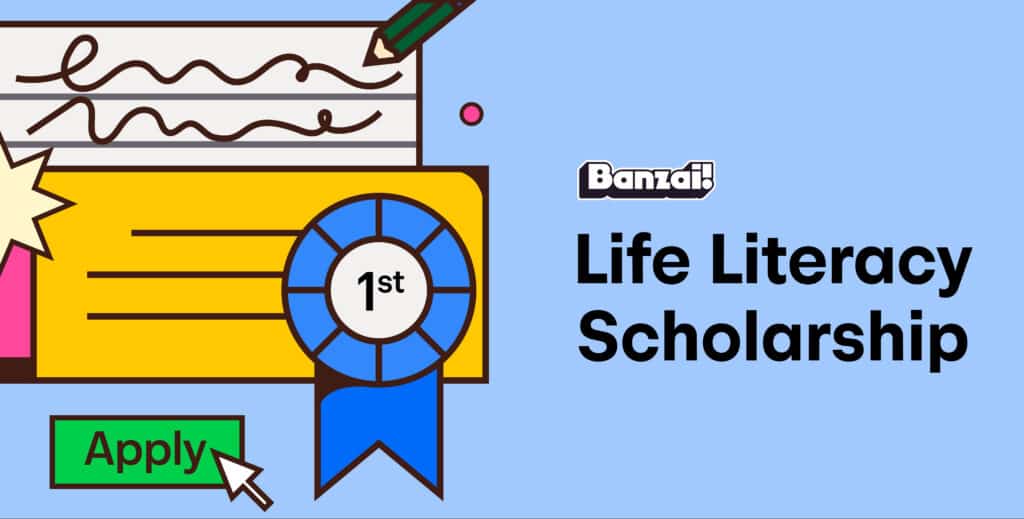An estimated 454,000 undocumented students are enrolled in postsecondary education nationally, of which 46 percent are Latinx, 25 percent are Asian American and Pacific Islander (AAPI), 15 percent are Black, 12 percent are white, and 2 percent are biracial and multiracial students, according to the Lumina Foundation. They face immense challenges, though, in their higher education journey. They are not eligible for federal student aid – this applies to DACA students, too. They have little to no access to state aid. And depending on the schools they attend, they may not qualify for institutional aid either.
College is worth the investment, however, so undocumented students should look to private scholarships to help fund their college education.
Here are some of the best scholarships for undocumented students.
TheDream.US Opportunity Scholarship
Amount: Up to $80,000 maximum over 4 years. About: Dream.US, a nonprofit organization, created its…
TheDream.US National Scholarship
Amount: Up to $33,000 per year (renewable of each year). About: Dream.US refers to its…
Little Bird Scholarship for LGBTQI Immigrants
Amount: $18,000. About: Administered by the Stonewall Foundation, the Little Bird Scholarship provides a total…
MPOWER Refugee Scholarship
Amount: Up to $3,000. About: Offered by MPOWER Financing, which provides private student loans to…
MPOWER Women in STEM Scholarship
Amount: Up to $6,000. About: Offered by MPOWER Financing, which provides private student loans to…
MPOWER Global Citizen Scholarship
Amount: Up to $10,000. About: Offered by MPOWER Financing, which provides private student loans to…
MPOWER MBA Scholarship
Amount: Up to $10,000. About: Offered by MPOWER Financing, which provides private student loans to…
MPOWER Monthly Scholarships for International Students
Amount: Up to $2,000. About: Offered by MPOWER Financing, which provides private student loans to…
LAGRANT Foundation Undergraduate Scholarships
Amount: $2,500. About: The LAGRANT Foundation offers an annual scholarship and career building program for…
LAGRANT Foundation Graduate Scholarship
Amount: $3,750. About: Each year, the LAGRANT Foundation selects 20 minority graduate and Ph.D. scholarship…
HSF Scholarship Program
Amount: $500-$5,000. About: Each year, the Hispanic Scholarship Fund (HSF) selects about 10,000 students to…
Golden Apple Scholars of Illinois
Amount: Up to $23,000. About: The Golden Apple Scholars of Illinois is a tuition assistance…
WWIN Star Scholar
Amount: Up to $5,000 per year (for 4 years). About: The Washington Women In Need…
Prospanica Scholarships
Amount: $2,000-$5,000. About: Each year, Prospanica — the Association of Hispanic MBAs and Business Professionals…
FARE Health Equity Scholars Program
Amount: $10,000. About: Established in 2022, Food Allergy Research and Education (FARE) has partnered with…
NMF Primary Care Leadership Program (PCLP)
Amount: $5,000. About: The GE-NMF Primary Care Leadership Program provides future healthcare workers with a…
Scholarships for Undocumented Students
An estimated 454,000 undocumented students are enrolled in postsecondary education nationally, of which 46 percent…
The scholarships listed above are just some of the best scholarships we’ve found for you. There are many other scholarships out there.
Use TUN’s Scholarship Search Engine to find more scholarships for you.
To keep on top of new scholarships as they are offered, be sure to join the TUN Community. We will let you know about scholarships that you qualify for.
When to apply for scholarships
Each scholarship has a specific deadline. These deadlines occur throughout the year, so you can find one for any time of the year. Keep in mind, however, that some scholarship deadlines may fall months, even a year, before the start of the academic year for which you’re seeking a scholarship.
So, if you’re a high school student looking to get a scholarship for your freshman year of college, you should start the search process early. While you don’t necessarily have to apply for scholarships in your freshman or sophomore year, you will develop a sense of scholarships that are available so you can apply when you’re ready.
If you’re a current college student, you should be looking for scholarships throughout the year. That way, if you find an award that appeals to you, you’ll be ahead of the game.
And when you apply, be sure to meet the deadline for each specific scholarship.
How to apply for scholarships
Each scholarships has its its own unique requirements and qualifications. The first step to successfully applying for any scholarship is reading the details carefully. Make sure that you fit the eligibility criteria and fill out the application completely.
Pay attention to what’s required of you. For example, if you need a recommendation letter, you should request one way ahead of time so you have one by the time you apply. If an essay is required, start writing weeks before the deadline so you have an essay you can be proud of before the due date.
Aim to send in your application at least a few days before the deadline. This way, you avoid the risk of getting sidelined by technical glitches, tests, heavy homework load, or illness.
And don’t forget to submit everything required of you as part of your application.
For more tips on how to apply for scholarships, check here.
How to find scholarships
Colleges may offer either merit-based or need-based scholarships or both. You can usually find most of the information by clicking on their “financial aid” page. If you have questions, don’t hesitate to email or call their financial aid office.
There are also outside scholarships — like the ones listed above — that are sponsored by companies, organizations, foundations, and individuals as a way to give back to their communities. The awards can cover your entire tuition or a portion of it. Some scholarships have a GPA requirement or are based on financial need, while others embrace a cause or emphasize community involvement, athletic achievement, diversity, passion, and much more.
So, how do you find outside scholarships like these?
Start your search with TUN’s Scholarship Search Engine to find scholarships that are ideal for you. You can search by grade level, GPA, major, state of residency, scholarship name, or deadline month. You can also browse through our featured scholarships, some available only through TUN, and a collated list of scholarships for specific groups of students.
You should also check with your high school or college to see if they have a list of scholarships. Your guidance counselor may have the list or point you to someone who can help you. They may also be in the know about scholarships sponsored by local stores or organizations.
Your family is yet another good source of scholarships. Your parents or guardians may work for a company that offers scholarships for dependents of employees.
If you work while in high school or college, you may also qualify for an employee scholarship.
For more tips on how to find scholarships, check here.
How to get scholarships
Scholarships, especially ones with high awards, can be very competitive. In some cases, you may be competing against thousands of students.
So, how do you increase your chances of winning a scholarship?
First, make sure you meet the eligibility criteria and submit all the information required of you, including recommendation letters, transcripts, and resume.
Second, be sure to distinguish yourself from the other applicants. Your essay, if that’s required, is what makes you unique so let your personality and creativity shine through. How do you do that?
You can achieve that “by showing instead of telling,” according to Sarah Chomette, an eAdviser with the College Advising Corps.
“When answering a creative prompt or inputting your personal statement, it’s important to provide the reader with a story instead of just telling them about your goals and accomplishments,” she said. “That can be kind of boring and it makes you get lost in the crowd.”
A successful essay must include four major components, Chomette explained. First, make sure that you convey your personal values. Second, be open and honest to help the reader feel a connection with you. Third, let the reader know why your story is important. Fourth, your writing must show that you put time and effort into it.
If a scholarship asks for a video or infographic instead of an essay, the same principle applies.
To summarize, always put thought and effort into your whole application and submit your best work. There should be no obvious errors or typos. And if you need to submit a recommendation letter, reflect on who knows you best and whose recommendation would help your application the most.
Are scholarships taxable?
Typically, scholarships are not taxable. However, it can depend on how the scholarship money is being used, according to federal tax laws.
Scholarship dollars are tax-exempt if they are going to a degree-seeking candidate and are being used to pay for tuition and fees required for enrollment, books, supplies, and other educational expenses.
Scholarships are not tax-exempt, and you must report them as “gross income,” if they are used to pay for room and board, travel, or optional equipment.
If you have additional questions, you should reach out to the financial aid office of your prospective or current college or university.









